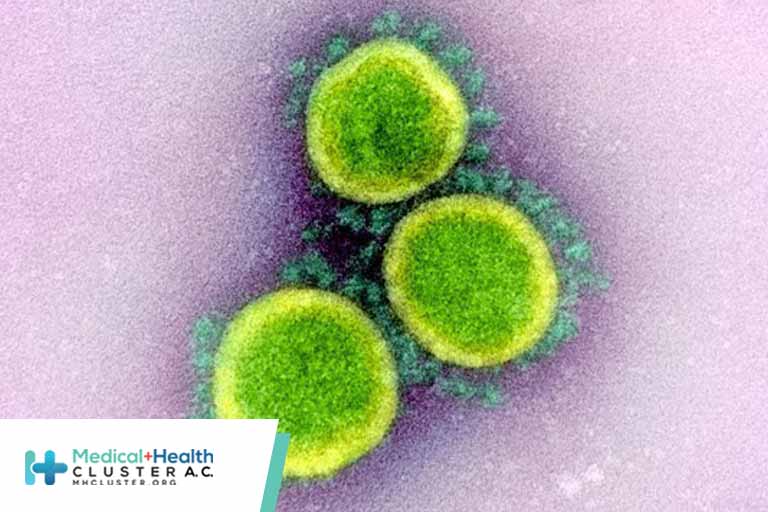En atención a la creciente preocupación sobre la confianza en...
Leer más
Emergence of a Novel SARS-CoV-2 Variant in Southern California

A spike in COVID-19 has occurred in Southern California since October 2020. Analysis of SARS-CoV-2 in Southern California prior to October indicated most isolates originated from clade 20C that likely emerged from New York via Europe early in the pandemic.1 Since then, novel variants of SARS-CoV-2 including those seen in the UK (20I/501Y.V1/B.1.1.7), South Africa (20H/501Y.V2/B.1.351), and Brazil (P.1/20J/501Y.V3/B.1.1.248) have emerged, with the concern of increased infectivity and virulence.2,3 Thus, we analyzed variants of SARS-CoV-2 in Southern California to establish whether one of these known strains or a novel variant had emerged.
Methods
Regulatory review with waiver of consent was completed by Cedars-Sinai Medical Center (CSMC). From all samples from symptomatic inpatients and ambulatory care (urgent care, primary care, and employee health) that tested positive for SARS-CoV-2 collected from November 22, 2020, to December 28, 2020, at CSMC with cycle threshold values less than 30, a random sample from selected runs and dates within the collection period was sequenced and analyzed (eMethods in the Supplement). In addition, phylogenetic analysis was conducted with CSMC samples and globally representative genomes on January 11, 2021, by utilizing Nextstrain, a collection of open-source tools for visualizing the genetics behind the spread of viral outbreaks.4 The representative global samples were randomly chosen using a computer algorithm from more than 400 000 available genomes on GISAID (Global Initiative on Sharing All Influenza Data), an open-access global collection of viral genomic data,5 collected between December 21, 2019, and January 11, 2021 (eMethods in the Supplement).
The proportional prevalence of each clade over time in samples from California as a whole and Southern California specifically and presence of any novel lineages discovered worldwide was calculated using publicly available sequences from GISAID (including samples from CSMC), collected between March 4, 2020, and January 22, 2021. Southern California was defined as including the following counties: Imperial, Kern, Los Angeles, Orange, Riverside, San Bernardino, San Diego, San Luis Obispo, Santa Barbara, and Ventura.
Results
Of 2311 samples at CSMC, 192 were selected and 185 (67 inpatient; 118 outpatient) underwent phylogenetic analysis, along with 1480 representative genomes using Nextstrain. A diverse set of lineages with 2 main clusters was identified. The smaller of the 2 clusters was from the 20G lineage and accounted for 22% (40 of 185) of the samples. The larger cluster (36%; 67 of 185) consisted of a novel variant descended from cluster 20C, defined by 5 mutations (ORF1a: I4205V, ORF1b: D1183Y, S: S13I; W152C; L452R) and designated CAL.20C (20C/S:452R; /B.1.429).
Analysis of 10 431 samples from California, including 4829 from Southern California, revealed that CAL.20C was first observed in July 2020 in 1 of 1247 samples from Los Angeles County and not detected in Southern California again until October. Since then, this variant’s prevalence has increased in the state of California and in Southern California, where on January 22, 2021, it accounted for 35% (86 of 247) and 44% (37 of 85) of all samples collected in January, respectively.
Sequence analysis of 405 871 global samples on GISAID on January 22, 2021, revealed that CAL.20C was only found in Southern California in October 2020 (4 cases). In November 2020, 30 cases were also identified in Northern California and individual cases in 5 additional states. As of January 22, 2021, CAL.20C has been detected in 26 states and other countries (Supplement).
Discussion
A novel variant of SARS-CoV-2, CAL.20C, was identified, which emerged in Southern California contemporaneously with the local surge in cases. Unlike clade 20G, currently the largest reported clade in North America, this strain is defined by 3 mutations in the S protein characterizing it as a subclade of 20C. The S protein L452R mutation is within a known receptor binding domain that has been found to be resistant to certain spike (S) protein monoclonal antibodies.6 Because this study was limited to databases of publicly available genomes and a comparatively small set of local samples, the possibility of collection bias cannot be ruled out. Additionally, as clinical outcomes have yet to be established, the functional effect of this strain regarding infectivity and disease severity remains uncertain. Nevertheless, the identification of this novel strain is important to frontline and global surveillance of this evolving virus.
Créditos: Comité científico Covid




